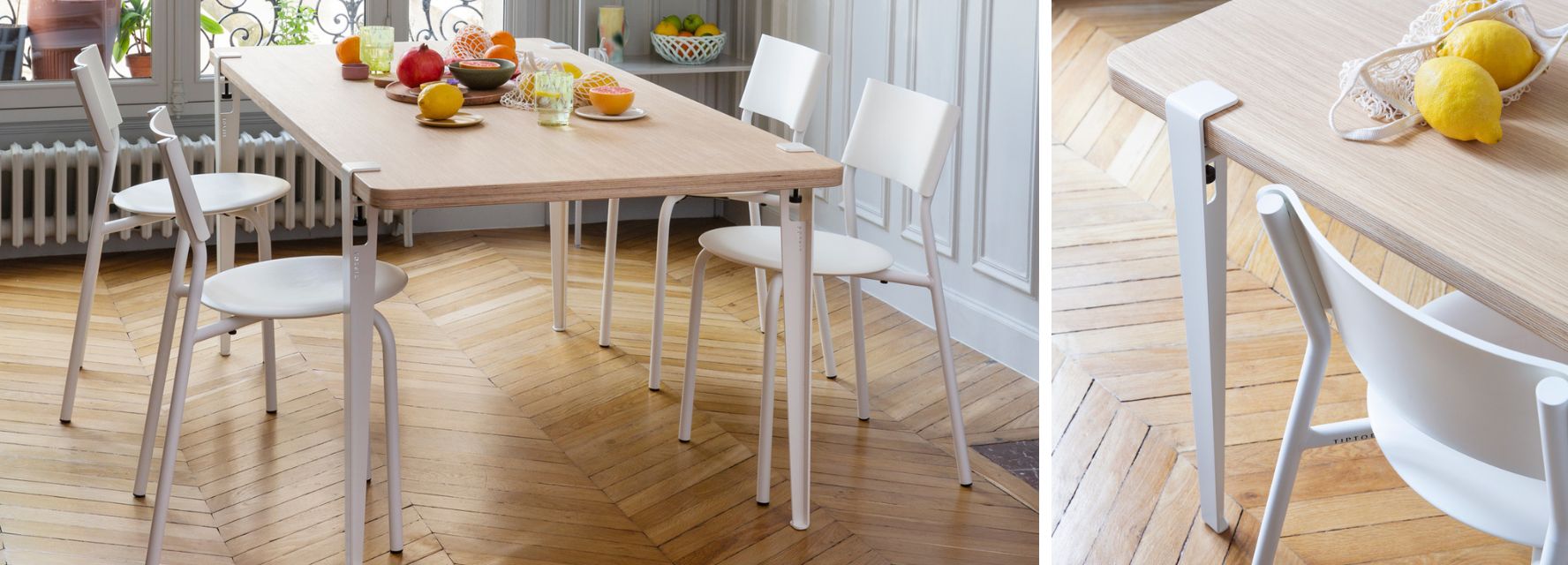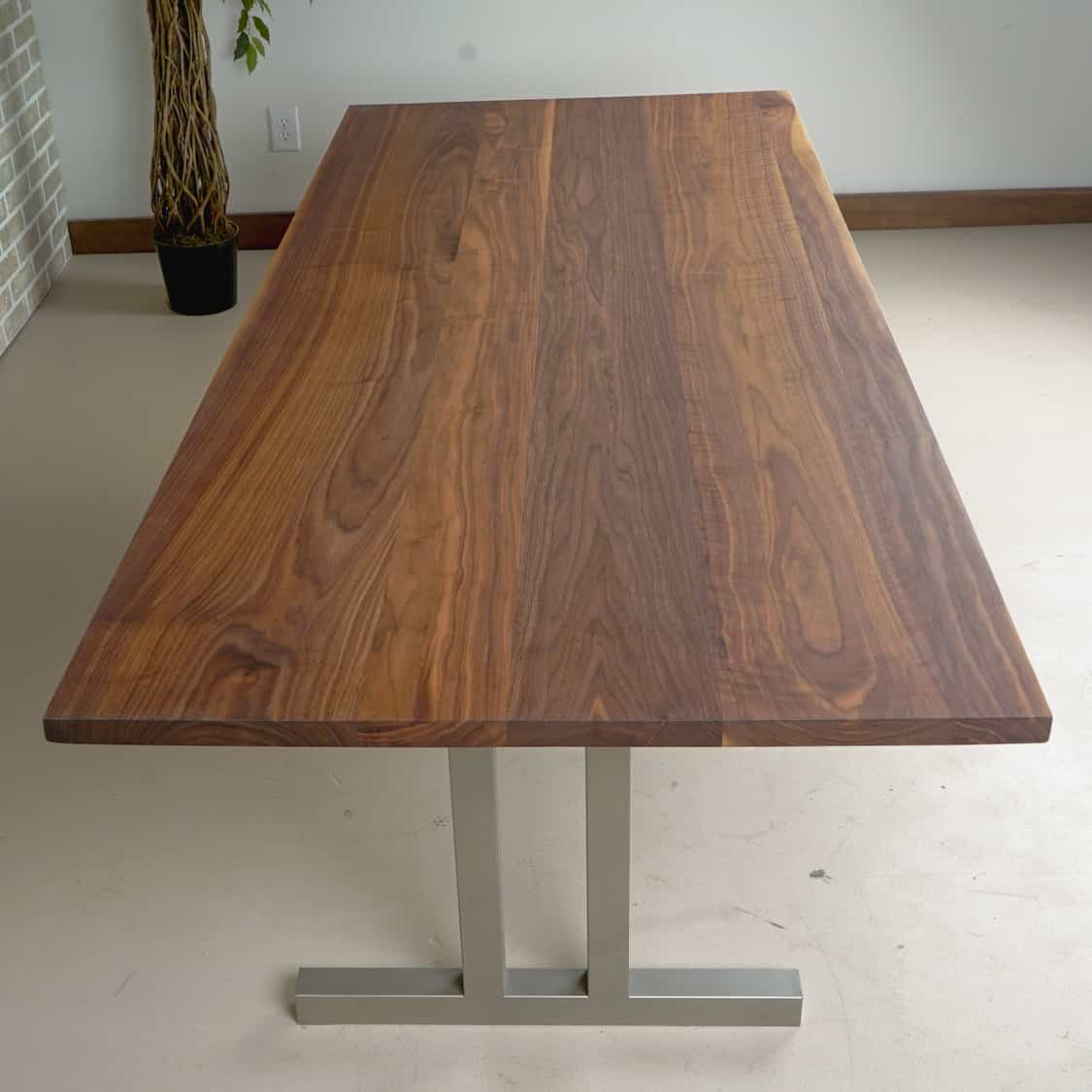Trick Variables to Remember for Eating Table Legs Timber Choices
When selecting timber for eating table legs, several vital factors require cautious factor to consider to make certain both performance and aesthetic charm. The selection of timber type, characterized by its durability and unique grain patterns, plays a pivotal role in the overall style and durability of the piece.
Wood Types and Qualities
When selecting timber for dining table legs, it is vital to comprehend the special qualities of numerous timber types. Different timbers offer distinct advantages and negative aspects, influencing both the sturdiness and visual charm of the finished product.
Oak, known for its excellent durability, likewise includes a prominent grain that can add personality to the table. Cherry wood, with its rich color that deepens over time, offers a luxurious look however might need even more upkeep to prevent scratches.
On the various other hand, softwoods like want and fir are a lot more affordable and simpler to deal with, yet they are less durable than hardwoods. Pine is lightweight and features a cozy, rustic appearance, making it a favored choice for informal dining settings. It is much more prone to damages and scratches.
Comprehending these attributes will certainly help in making an educated decision to make sure the legs of the table meet both visual and functional requirements.
Grain Patterns and Aesthetic Appeal
Choosing the best grain pattern can dramatically boost the visual charm of eating table legs. The timber's grain is not just a visual characteristic; it imparts a special personality and beauty per piece. Various wood types display unique grain patterns, varying from the straight lines of maple to the intricate swirls of oak and the striking figure of walnut. These patterns can stimulate different designs, from rustic to modern-day, making it vital to choose a grain that aligns with the general design of the dining area.
Furthermore, the orientation and range of the grain can influence the perceived size and elegance of the table. For example, larger, more pronounced grains might lend a vibrant, dramatic result, while finer, subtler grains can create a fine-tuned, downplayed appearance. Additionally, the finishing process can even more boost these patterns, stressing the all-natural charm of the timber and bringing out rich tones.
Eventually, the choice of grain pattern need to harmonize with various other design elements, such as the table top and surrounding furniture, ensuring a natural aesthetic that boosts the eating experience. Thoughtful choice of wood grain not only contributes to the table's charm yet also reflects the proprietor's taste and style.
Resilience and Stamina
The sturdiness and stamina of table legs are extremely important considerations for ensuring longevity and security in any dining area. Selecting the right wood is important, as different varieties display differing degrees of durability. Hardwoods such as cherry, oak, and maple are often chosen for their integral strength and resistance to wear. These products not only endure day-to-day usage however also sustain hefty lots, making them ideal for dining tables that regularly fit several restaurants. Dining Table Legs Wood.

Ultimately, buying high-quality wood and robust building techniques will certainly produce an eating table that stands the examination of time, while offering a trusted foundation for many meals shared among friends and family. Focusing on sturdiness and strength ensures that your dining table stays functional and visually pleasing for several years to find.
Maintenance and Care
Correct upkeep and treatment are essential for protecting the sturdiness and strength of dining table legs made from wood. Normal cleansing is essential; utilizing a soft, moist cloth guarantees that dust and debris do not gather, which can cause scrapes and monotony. It is a good idea to avoid extreme chemicals or abrasive products that could damage the coating.
Furthermore, applying an appropriate wood polish or wax occasionally can aid preserve the sheen and secure the wood from moisture and spills. Nonetheless, it is critical to comply with the maker's recommendations relating to the kind of product to use, as certain finishes might respond adversely to particular chemicals.
Moisture and temperature changes can also affect wooden table legs, triggering them to warp or crack. It's ideal to position the table far from straight sunlight and warm sources. Resolving these promptly can stop further why not find out more damages. if the table legs have any kind of damages or scrapes.
Lastly, periodically checking the joints and screws for rigidity is essential to maintain structural honesty (Dining Table Legs Wood). By sticking to these upkeep practices, homeowners can guarantee their wooden eating table legs continue to be functional and attractive for several years ahead
Environmental Considerations
When picking timber for dining table legs, it's vital to take ecological considerations into account. The sourcing and sustainability of wood are vital in lessening eco-friendly effect. Opting for wood from qualified sources, such as those endorsed by the Forest Stewardship Council (FSC), makes sure that the lumber is gathered sensibly, advertising woodland preservation and biodiversity.

Additionally, local sourcing of wood decreases transport emissions, sustaining neighborhood economies while decreasing ecological impact. It is additionally a good idea to be knowledgeable about the wood's treatment and ending up procedures, as specific chemicals can be unsafe to both human health and wellness and the environment. By prioritizing sustainable timber selections, customers can add to ecological preservation while delighting in the toughness and beauty of their table legs.
Conclusion
Finally, sites selecting wood for dining table legs requires careful factor to consider of different variables, consisting of wood types, grain patterns, and resilience. The visual appeal of one-of-a-kind grain patterns can improve the total design, while the toughness of hardwoods ensures long life. Maintenance demands and ecological sustainability additional influence timber selections, highlighting the relevance of sourcing from accredited or reclaimed materials. A notified selection procedure ultimately adds to a functional and aesthetically appealing eating area that lines up with lasting methods.
When selecting wood for eating table legs, numerous critical factors require mindful factor to consider to ensure both capability and aesthetic charm.Correct upkeep and care are crucial for maintaining the resilience and stamina of eating table legs made from timber.When selecting wood for eating table legs, it's crucial to take environmental factors to consider into account. By prioritizing sustainable timber choices, consumers can contribute to environmental preservation while enjoying the sturdiness and appeal of their eating table legs.
In verdict, selecting wood for dining table legs necessitates careful consideration of various aspects, consisting of timber types, grain patterns, and toughness. Dining Table Legs Wood.
Comments on “Check Out Versatile Styles for Custom-made Dining Table Legs Wood Solutions”